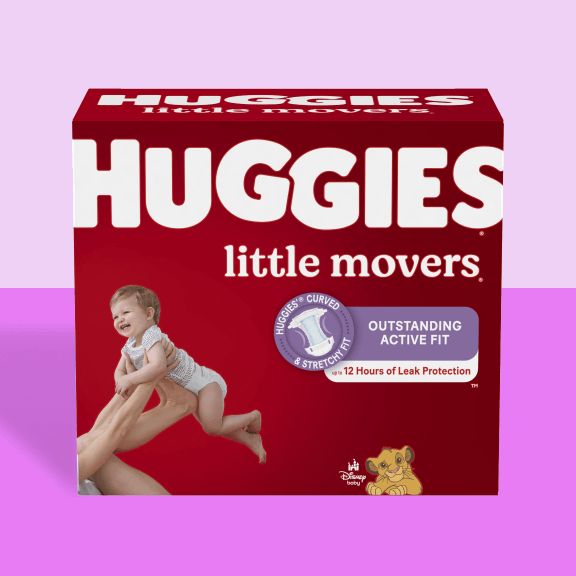Health & Wellness
Breast Engorgement While Pregnant and Breastfeeding
2 min. Read

Breast engorgement is usually only a temporary issue. Over the first few weeks of a baby's life, a mother's milk supply equals her baby's needs.
What is breast engorgement?
Breast engorgement happens when the tissues of the breast fill with milk which create pressure and pain. Blood and body fluids can also fill the breast tissue, creating a feeling of fullness and discomfort.Signs and symptoms
During engorgement, the breasts can appear stretched and full, often with more visible veins. The nipples can also look stretched as the breast tissue around them extends the skin. With breast engorgement, the breasts can feel warm or even hot to touch.What causes breast engorgement during pregnancy?
Hormones signal to the breast to prepare for breastfeeding. Breast and nipple changes can be the first sign of pregnancy. Colostrum is an early form of milk produced by the breasts from around the third trimester of pregnancy. Colostrum is rich in fats and antibodies and is the only nutrition newborn babies need.After birth engorgement
Newborn babies are hard-wired to seek their mother's breast and start sucking. When a baby is premature or there have been birth complications, it can take a while to learn how to attach and suck effectively. Early breastfeeding is important. Although the volume of colostrum is generally small, it is nutritionally perfect for newborn babies. It can take 3 to 4 days for a mother's breasts to fill with milk. Regular, effective sucking by the baby helps a mother's breasts to produce milk.When breastfeeding
Some mothers produce more breast milk than others and seem to be more prone to breast engorgement. Frequent, uninterrupted breastfeeds can help to avoid engorgement from occurring. Women who have had breast implants may be more prone to breast engorgement.What breast engorgement feels like
The feeling can range from mild discomfort to significant pain. We all have different pain thresholds, and our own individual interpretation of what pain means. Breast and nipple tissue is always sensitive, and any buildup of pressure is uncomfortable.How to prevent breast engorgement
Breast engorgement is uncommon immediately after birth. For most women, it takes 3 to 4 days after their baby is born for their breasts to produce milk. In women who have breastfed before, it can take less time for them to lactate than women having their first baby. Breast engorgement is relieved when a baby feeds. For some women, offering a breastfeed only provides temporary relief. What's important is to breastfeed as often as the baby demands. Look for your baby's cues or signals that they want to feed. Avoid following the clock or timing your baby's feeding. Healthy, well babies can give their own signals that they want and need to breastfeed.How to relieve breast engorgement
The best way to manage breast engorgement is to breastfeed as frequently as your baby demands. In newborns, this can be every couple of hours or more. Newborn babies can demand to breastfeed 8 to 12 times in a 24-hour period. This is nature's way of ensuring they have enough milk to grow and thrive and for their mother to produce enough milk. It can take 6 to 8 weeks for a mother’s breast milk supply to be established to meet her baby's needs. Over the early weeks, a mother's hormones are stabilizing, and her baby is adjusting to feeding and digesting milk. There are a lot of complex adjustments being made.Tips to relieve breast engorgement
- Breastfeed your baby frequently. If they are sleepy, it's alright to wake them to offer a breastfeed.
- Express your breasts for comfort. You could try hand expressing or using a pump.
- Gently massage your breasts in a downward motion towards your nipple when your baby is feeding.
- Wear a firm and supportive bra. Take your bra off when you are breastfeeding so there's no interruption to the flow of milk.
- Some women find relief by fully expressing their breasts if the pressure is too uncomfortable.
Things to avoid when your breasts are engorged
- Avoid using excessive heat or cold on your breasts or nipples.
- Avoid long periods of time between feedings.
- Avoid being separated from your baby. It's important they are physically close to you so you can see and hear them if they need to feed.
- Avoid stopping breastfeeding when you have breast engorgement. This can lead to mastitis or a breast abscess forming.
Frequently asked questions about breast engorgement
Would it help to find another position to breastfeed? Experiment with different attachment positions. You may be more comfortable with a football hold when your baby is breastfeeding. Can I take medicine to help with the pain? Speak with your provider or pharmacist about pain relief which is safe to take for breastfeeding.
The information of this article has been reviewed by nursing experts of the Association of Women’s Health, Obstetric, & Neonatal Nurses (AWHONN). The content should not substitute medical advice from your personal healthcare provider. Please consult your healthcare provider for recommendations/diagnosis or treatment. For more advice from AWHONN nurses, visit Healthy Mom&Baby at
health4mom.org.













